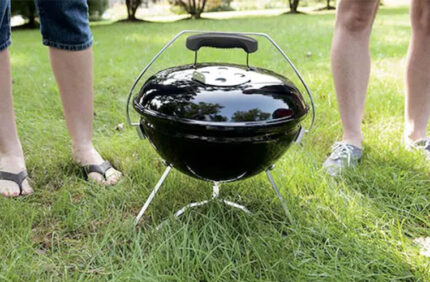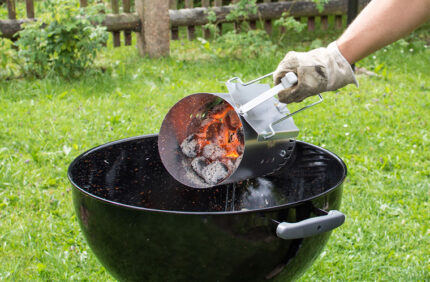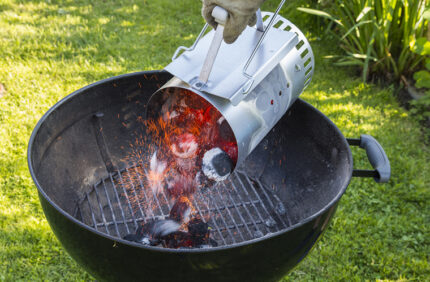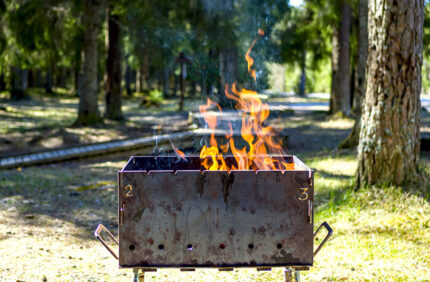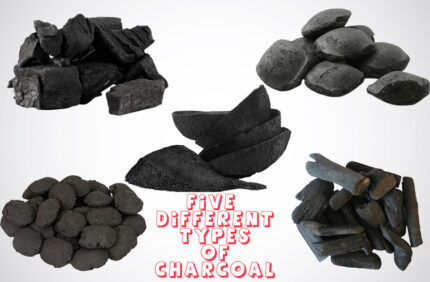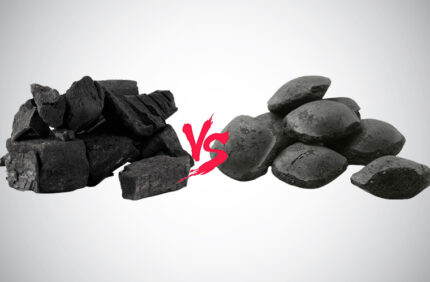Among other groups of people across the world, you might find or hear conversations centered on Hollywood’s best feature movie or the best new gaming console. But, if there is one argument that seeps into virtually every grilling conversation, it’s lump charcoal vs briquettes.
One fun thing to know about charcoal is that this source of fuel has a lot of carbon content. As such, there is more potential energy to burn better and cleaner than firewood from virtually any tree. However, despite the general excellence of using charcoal for your grilling needs, several people still prefer one type over the other.
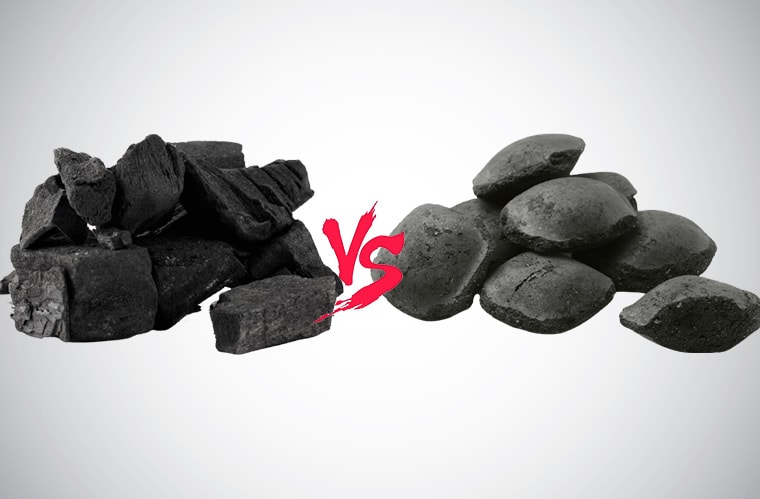
Almost everyone has a different opinion on the topic. But, what are the facts? What is the difference between the briquettes and lump charcoal? If one is better, why is it so? In this article, we’ll look at all these and settle the argument once and for all.
Lump Charcoal versus Briquettes: Where is Charcoal Acquired?
Before we begin dissecting the argument about briquettes vs lump charcoal, you must understand where charcoal comes from in the first place. Generally, the most commonly used material for creating your charcoal is wood. However, even in that regard, there are specific preferences.
You see, if you are a charcoal producer, you have two broad options in terms of softwood or hardwood to create your products. A few examples of the former include pine, cedar, and fir. The latter includes such trees as hickory, oak, and apple. The primary difference between these two is that softwood trees keep their leaves throughout the year. Hardwood trees, on the other hand, shed them from time to time.
Now, if you decide to use softwood, you might be putting yourself at a bit of a disadvantage. This is because the smoke from softwood often introduces a not-too-pleasant taste to your meat after grilling. So, if you happened to sell softwood coal to people, you’ll likely not get a lot of positive reviews.
As such, different types of charcoal, whether lump or briquettes, are almost always made from hardwood. This ensures that the charcoal gives the meat being grilled a much better flavor than you’d have with softwood.
Lump Charcoal Vs Briquettes: Which is Better?
Now that you understand the dynamics of your charcoal production, let us delve right into which one comes out on top between the two.
Lump Charcoal
In the simplest terms possible, lump charcoal is essentially hardwood that has been burned down to its simplest form. In the creation of lump charcoal, the wood goes through the process of carbonization until there is virtually nothing left but carbon.
More often than not, to ensure effectiveness while burning, lump charcoal producers will burn the wood in a silo with minimal levels of oxygen. This helps to ensure that there is no sap, naturally-occurring methane, hydrogen, or moisture in the end product. The process of doing this is known as charring. Interestingly, to this effect, some people sell charcoal as char wood.
In a way, you could say that the lump charcoal creation process is essentially just recycling. This is because lump charcoal producers rarely ever cut down new trees to create their products. More often than not, they use scrap wood from businesses that deal with wood and mills.
After its carbonization and during its use, charcoal usually burns around 760 degrees Celsius. This is far higher than any temperature you can get from briquettes. Extra points for lump charcoal? Well, we can’t know that until we have all the facts rolled out, can we?
Pros:
- Lump charcoal burns very hotly. So much so that it can get your steak ready only a few moments after you put it to the grill.
- It gives your food an abundant and unique smoke flavor.
- Burn for up to an hour at a stretch. This makes it perfect for fast grilling sessions.
- It smells very good.
Cons:
- It’s not every piece of lump charcoal you buy that has successfully gone through the full carbonization process. Larger pieces, for example, will likely still carry lignin and cellulose, two major wood components. On the positive side, this gives you a bit more flavor. On the negative side, various pieces of meat will taste differently. This is because they’re exposed to fully carbonized and semi-carbonized coal.
- The rate at which it burns might make it necessary for you to constantly add more. So, if you happen to have a function where you need to grill a lot of meat very fast, you’ll have to buy a lot of coal.
- Unevenness in the sizes of pieces. This makes it a tad difficult to accurately predict how much time you’ll spend cooking.
- It is a tad more expensive than briquettes.
Briquettes
According to the Merriam-Webster dictionary, which provides the origin of the word, these are also known as briquets. Briquettes are essentially blocks that comprise of coal dust, wood chips, sawdust, and other additives.
They are often light, inexpensive, and uniform in size. Unlike their fast and furious counterpart, these tend to burn between 800 to 1000 degrees Fahrenheit.
Generally, the additives are included to shape them properly. However, they also help with unmolding the briquettes at different points in time.
At some point, traditional additives were all the rage. These included chemical compounds or materials with chemical compounds like sodium nitrate, borax, or limestone. But, recently, the charcoal industry has started evolving to more natural means of production. As such, you can now get a bag of natural charcoal with nothing else in it but wood.
One of the things that make briquettes fairly attractive is that you can make them yourself. All you need is to first gather biomass. The biomass could be corn husks, wood chips, straw, or even peanut shells. Once you’ve got those, mix them with sawdust. Then, place it in the mold, put it in a fire, and voila! Your briquettes are ready.
Pros:
- They burn for a significant amount of time at low temperatures. This makes them effective for smoking or slow roasting of your steak.
- The uniformity of their shape makes it very easy to arrange them while cooking. It could also be useful in predicting how long it’ll take for your meal to get ready with them.
- Lightweight and easy to carry around.
- The cost of acquisition is low.
Cons:
- A major part of the creation of briquettes is the inclusion of additives. These additives can be bad for your health and even trigger allergies.
- They can take some time before they light up. This can slow you down when you need to get things started fast.
- There’s less wood in them. This leaves more room for ash, making cleanup a tedious process.
Final Verdict
In our comparison of lump charcoal vs briquettes, we’ve carefully looked at the two. Evidently, they have their pros and cons, and they seem to be direct opposites to each other. As such, one might think it’ll be difficult determining which is better.
However, in reality, both are designed for different purposes. If you want to slow roast your meat, a bag of briquettes will do you a world of good. If, however, you want to get things done quickly, you’ll use lump charcoal.
You wouldn’t get a bulky Hollywood-grade video camera for a few Instagram selfies, will you? If you wouldn’t, the reason is simple. The camera is designed for a different type of work. The same applies to lump charcoal and briquettes.
So, instead of looking for the best fuel, it might be satisfying to look for the most desirable one for you and your desired purpose.


